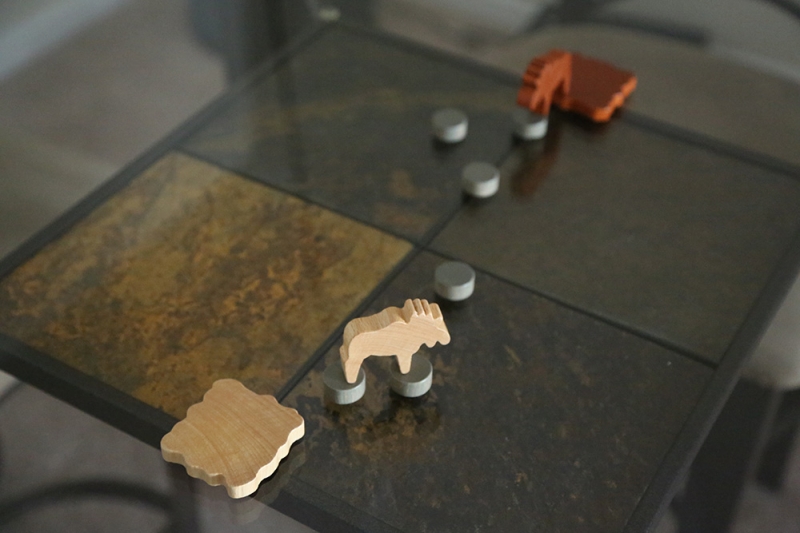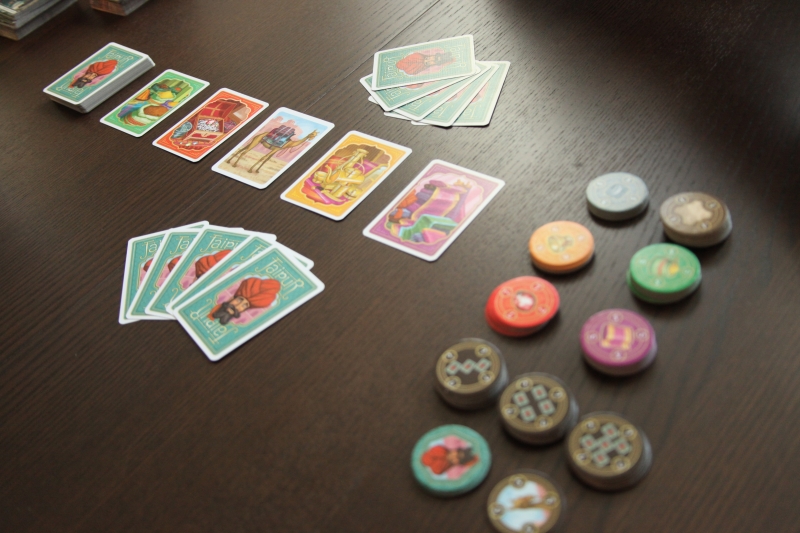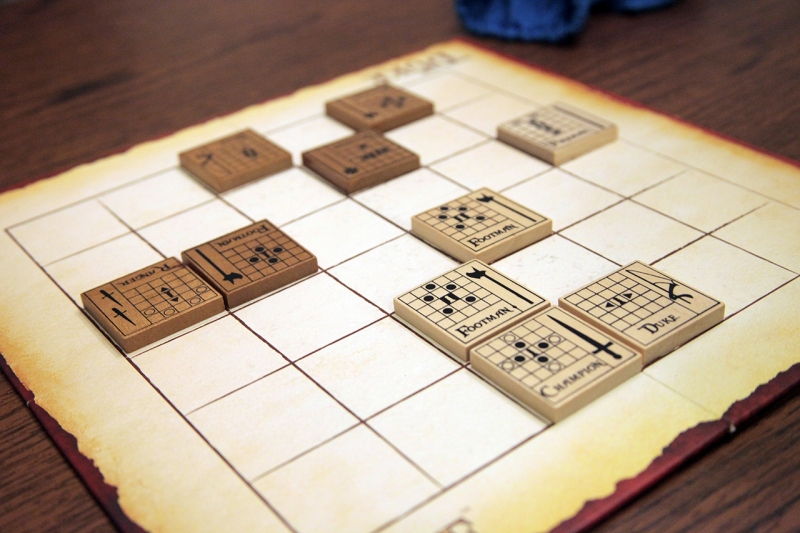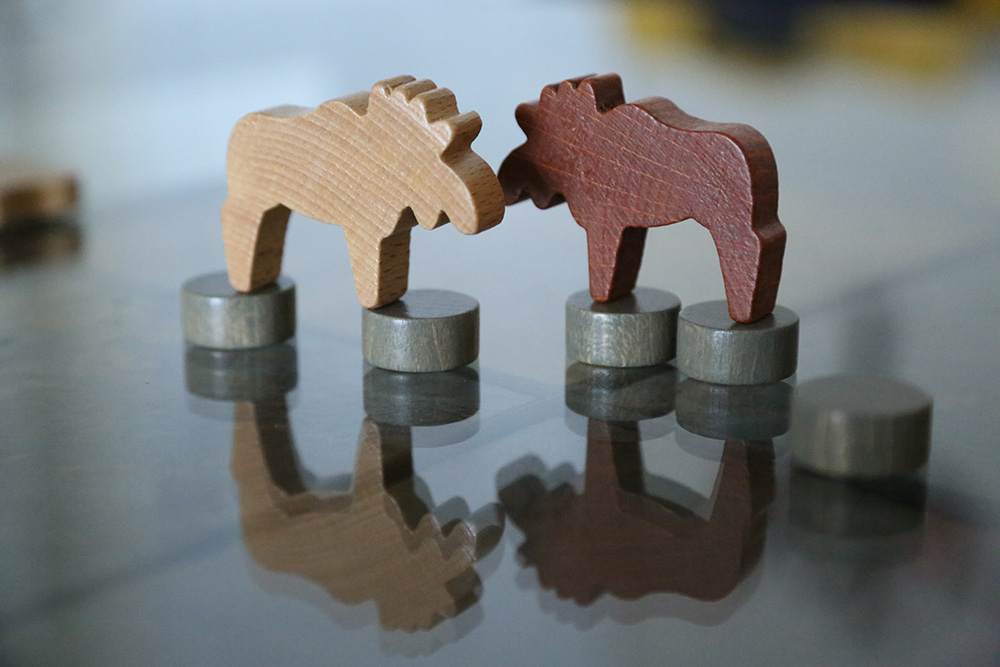The other day, I was chatting with some friends and my favorite question came up. The question that makes my heart pump a little faster and my brain start to fizzle.
“So, you’re into board games, right?
Whenever I’m asked this, I’m immediately caught between a sheepish “Who, me? Board games? Well…maybe a little” and the more accurate “BOARD GAMES!? YEAH! I LOVE BOARD GAMES! DO YOU LIKE BOARD GAMES!? DO YOU WANT TO PLAY A BOARD GAME!?”
Fortunately, I was able to suppress the madness and play it off with a big grin and a simple…
Yeah.
Whew! Nailed it. I wish I had sunglasses to throw on and a comb to slick back my hair. I’m just a cool guy doing cool things.
What came next was actually an excellent question and one that I hear fairly frequently, especially from people who don’t have a game group or are new to the hobby.
What are some good two-player games that I can play with X?
No, they didn’t say “X,” silly reader. It could be a spouse, partner, pet, parent, sibling, stranger – basically whoever you can rope into sitting across the table from you. You want to know what are good games for just you and that one special….thing.
Considering I’m known for forcing Kelly B! to sit down and play whatever new and shiny thing I’ve acquired, I figured I’m just the man to respond to this. I’ve scrounged up some recommendations and will be assessing each of these games on three criteria:
Difficulty
How difficult is the game to get to the table and start playing? This will consider the amount of rules and concepts to learn and how fast it can be set-up and played. (1 = Easy; 5 = Stupid Hard)
Cost
Games are expensive! This must be considered when looking for new games. Remember, they’re usually cheaper online, but supporting your local game store is still a good practice.
Replayability
You’re spending the time and the cash, how many times will you get this game to the table? This partially depends on your group, but some games will burn out faster than others regardless.
So, let’s jump in and look at some cool two-player games that you may or may not know about!
Bananagrams
Bananagrams is an excellent option for two-players no matter their experience level. The basic concept is similar to Scrabble – you’re trying to form words by stringing together multiple words “crossword” style – only it’s played in real-time. Once someone yells “SPLIT!” players start building their own crossword puzzle as fast as they can. First one to use all of their letter wins!
Difficulty: 1. This game is extremely easy to pick up and learn. Now, the difficulty of the actual game depends on your vocabulary and ability to spell (quickly) – but, in general, this game is a piece of banana cake.
Cost: $15. This game is excellently priced, especially for the quality of the pieces and the packaging. I mean, it comes in a banana bag!
Replayability: 5. It’s fast, it’s fun, and it’s based on the letters you get and your own brain power. There’s plenty to experience here and this game will easily come out again and again.
Elk Fest 
Elk Fest is a two-player game about the bleak life of Moose and their perpetual need to covet that of others. Okay, maybe it’s about Moose crossing a river, but why can’t they just be happy with the grass they currently have!? This is a dexterity game, meaning how well you play will be based on how good you are at flicking discs, very carefully, across the table.
Difficulty: 1. This game is also a piece of banana cake. The rules are roughly a page and once you know them, you’ll never need to break out the rulebook again. The challenge to this game is all in your flicking finger, not in complicated mechanics or confusing rules.
Cost: $20. This may seem a little high when you find there are only 10 or so pieces to the game, but they’re well made and it comes from a smaller publisher. It’s well worth the money.
Replayability: 4. We’ve played this dozens of times and it has yet to lose its charm. The game plays in 10 minutes and is clean and easy fun. It won’t fill a night – it’s more of a filler between other games – but there’s never a reason not to break this one out.
Jaipur
Jaipur is a set-collection game with fine goods, sweet beards, and camels! It’s relatively similar to Rummy, so it’s not too foreign, although it’s one step up from your regular deck of 52 cards.
Difficulty: 2.5. This game is fairly easy, but it has a bit more going on in it than some other games people have played. The rulebook is really clean and easy to understand, but it may take a game or two before you’re trading gold and leather with the best of ’em.
Cost: $25. This is a great price for this game. It comes in a compact box with an excellent insert; the cards are durable and have a nice satin finish to them; and there are a bunch of nice tokens (and rulebooks in a bunch of different languages).
Replayability: 4. This is another game that plays in under a half hour and provides a lot of interesting decisions and gameplay. If you dig it, you’ll be able to play this over and over again, easily getting your money’s worth. If it’s your only game, you may get burnt on it sooner than later, but that why it’s nice to have a healthy mix of these others games…
Hive
Hive is a strategy game where you and your opponent attempt to surround each others’ Queen Bee with your other pieces. It’s fairly unique in flavor and gameplay, but has hints of chess and checkers, with unique piece powers and movements.
Difficulty: 2. Hive is different, but it’s not particularly difficult. Once you know the object of the game and how each piece moves, you can easily jump in and start playing. The rulebook is simple and straightforward, making for a much lower barrier-to-entry.
Cost: $30. I’m up in the air on this cost. For a “designer board game” it’s not a bad price, but great games like Jaipur are priced lower and are comparable in quality. That being said, you get nice chunky pieces and a great carrying case with the game, so $30 isn’t a bad deal at all.
Replayability: 3.5. This may be a result of my limited experience, but it seems like there is less to Hive than other two-player games I’ve played. There is definitely strategy here and a bunch to explore, but it falls short (in my opinion, of course) when compared to others. It’s still great fun and plays quickly – ~20 minutes – so it is still an excellent option.
The Duke
It’s hard to be impartial with The Duke because I love it. It’s an abstract strategy game most comparable to chess. You move your unique pieces around the board trying to capture the other player’s Duke before yours is captured. It has a lot of cool mechanics and really gets the brain-juices pumping.
Difficulty: 3. The Duke is definitely tricky and there’s a bit more going on in terms of learning rules. It’s not hard, but there’s a lot more to take in. Although, once you get it, you get it.
Cost: $35. This really is a great price. You get a lot of gameplay and great component quality for $35. The board is a little lame, but it’s functional, and the pieces are great!
Replayability: 5. This is one of my favorites. The design of the game makes it almost infinitely replayable. There’s plenty of room to develop different strategies and tactics, as well as custom rule sets and personal tweaks.
Flash Point: Fire Rescue
Flash Point: Fire Rescue is the first cooperative game to make the list and it’s a good one! Players work together as firefighters to….fight fires. There are loads of different firefighters to choose from and part of the fun is choosing which power is best for the current situation!
Difficulty: 2. Flash Point is a breeze to get to the table. The rulebook has a starter rules set so you can break it out and start playing immediately. It also has more advanced rules that you can add in to mix it up and make it more challenging. It’s not quite as intuitive at first, but it won’t take long before you’re carrying cats out of burning buildings!
Cost: $40. This is on the high side for this list of games, but it’s not at all unreasonable. You get a well-made game that provides a lot of shiny bits for an average price. It could be cheaper, but it could also have been priced higher.
Replayability: 4. The way the game develops is random, which means no two games are likely to be the same. Add in the variable player powers and the double sided board and you get a game that can be played over and over. If you really like it, there are a TON of expansions that add even more variety.
So, there it is. Kind of. This is Part One of this list and it features a lot of shorter and faster games with lower entry points in terms of cost and difficulty. Stay tuned for Part Two, which will include some heavier titles that may bring you closer with your Player 2, or may just make you hate them and their stupid Player Two face.








